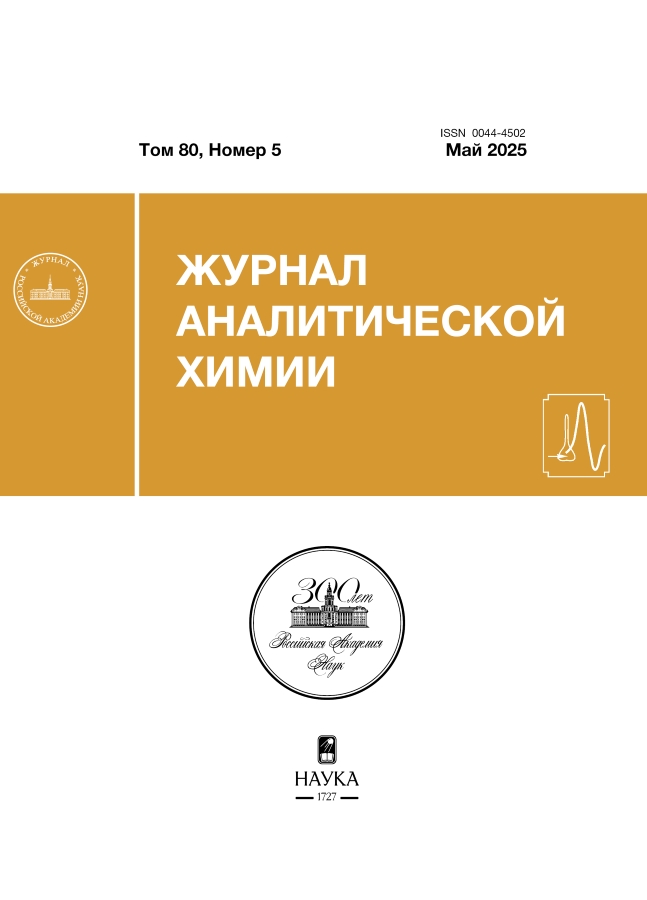Identification and adulteration of salmoninae caviar by PCR, IR spectroscopy and digital colourometry
- Authors: Amelin V.G.1,2, Emelyanov O.E.2, Tretyakov A.V.1, Gergel M.A.1, Zaitseva E.V.1
-
Affiliations:
- The Russian State Center for Animal Feed and Drug Standardization and Quality
- Vladimir State University named after Alexander and Nikolay Stoletovs
- Issue: Vol 80, No 5 (2025)
- Pages: 459-472
- Section: ORIGINAL ARTICLES
- Submitted: 20.06.2025
- Accepted: 20.06.2025
- URL: https://freezetech.ru/0044-4502/article/view/685424
- DOI: https://doi.org/10.31857/S0044450225050021
- EDN: https://elibrary.ru/asxqfz
- ID: 685424
Cite item
Abstract
The possibility to identify and establish adulteration of salmon fish eggs in a simple and accessible way using PCR, Fourier transform infrared spectroscopy, digital colourometry and chemometric processing of analysis results has been shown. The PCR method was used to determine the species affiliation of Salmoninae caviar. Absence of Salmoninae DNA in the samples of caviar, as well as the presence of DNA of other fish, indicated the adulteration of caviar products. Fourier transform infrared spectroscopy in the near and middle regions allowed to distinguish between natural and imitated caviar after processing of diffuse reflectance spectra by principal component and hierarchical cluster analysis methods. The above methods were combined with a simpler and cheaper colourometric method of analysis. Handmade devices with LEDs emitting light in the UV and IR ranges were used. The analytical signal was recorded using smartphones via specialised applications. Chemometric processing of the spectral characteristics of the samples made it possible to distinguish natural caviar from imitated and structured caviar: in the principal component method and hierarchical cluster analysis, points from the analyzed samples were located in different quadrants and clusters.
Full Text
About the authors
V. G. Amelin
The Russian State Center for Animal Feed and Drug Standardization and Quality; Vladimir State University named after Alexander and Nikolay Stoletovs
Author for correspondence.
Email: amelinvg@mail.ru
Russian Federation, Moscow; Vladimir
O. E. Emelyanov
Vladimir State University named after Alexander and Nikolay Stoletovs
Email: amelinvg@mail.ru
Russian Federation, Vladimir
A. V. Tretyakov
The Russian State Center for Animal Feed and Drug Standardization and Quality
Email: amelinvg@mail.ru
Russian Federation, Moscow
M. A. Gergel
The Russian State Center for Animal Feed and Drug Standardization and Quality
Email: amelinvg@mail.ru
Russian Federation, Moscow
E. V. Zaitseva
The Russian State Center for Animal Feed and Drug Standardization and Quality
Email: amelinvg@mail.ru
Russian Federation, Moscow
References
- Лаврухина О.И. Современные методы выявления фальсификации мяса и мясной продукции (аналитический обзор) // Труды Федерального центра охраны здоровья животных. 2017. №. 15. С. 153.
- ГОСТ 18173-2004. Икра лососевая зернистая баночная. Технические условия. М.: Изд-во стандартов. 2004. 10 с.
- Ситникова Н.В. Идентификация и фальсификация икры в России // Ученые записки Санкт-Петербургского им. В.Б. Бобкова филиала Российской таможенной академии. 2007. № 2 (28). С. 84.
- Калюжная Т.В., Орлова Д.А., Родак Г.Н. Идентификация икры лососевых пород рыб с помощью полимеразной цепной реакции с наблюдением в реальном времени // Международный вестник ветеринарии. 2021. № 4. С. 88. https://doi.org/10.52419/issn2072-2419.2021.4.88
- Santiago-Felipe S., Tortajada-Genaro L.A., Puchades R., Maquieira A. Recombinase polymerase and enzyme-linked immunosorbent assay as a DNA amplification-detection strategy for food analysis // Anal. Chim. Acta. 2014. V. 811. P. 81. https://doi.org/10.1016/j.aca.2013.12.017
- Taboada L., Sanchez A., Sotelo C.G. A new real-time PCR method for rapid and specific detection of ling (Molva molva) // Food Chem. 2017. V. 228. P. 469.
- https://doi.org/10.1016/j.foodchem.2017.01.117
- Абрамова Л.С., Козин А.В., Гусева Е.С. Проблема фальсификации зернистой икры лососевых рыб и пути решения // Пищевые системы. 2022. Т. 5. № 4. С. 319. https://doi.org/10.21323/2618-9771-2022-5-4-319-326
- Mazarakioti E.C., Zotos A., Thomatou A.A., Kontogeorgos A., Patakas A., Ladavos A. Inductively coupled plasma-mass spectrometry (ICP-MS), a useful tool in authenticity of agricultural poducts’ and foods’ origin // Foods. 2022. V. 11. № 22. Article 3705. https://doi.org/10.3390/foods11223705
- Третьяков А.В., Абраменкова О.И., Подколзин И.В., Соловьев А.И. Идентификация географической принадлежности мяса и икры методом химического фингерпринтинга // Ветеринария сегодня. 2012. № 2 (2). С. 39.
- Шаока З.А.Ч., Большаков Д.С., Амелин В.Г. Использование смартфона в химическом анализе // Журн. аналит. химии. 2023. Т. 78. № 4. С. 317. (Shogah Z.A.Ch., Bol'shakov D.S., Amelin V.G. Using a smartphone in chemical analysis // J. Anal. Chem. 2023. V. 78. №. 4. P. 317.) https://doi.org/10.31857/S0044450223030131
- Böck F.C., Helfer G.A., da Costa A.B., Dessuy M.B., Ferrao M.F. PhotoMetrix and colorimetric image analysis using smartphones // J. Chemometrics. 2020. V. 34. Article 12. https://doi.org/10.1002/cem.3251
- Helfer G.A., Magnus V.S., Böck F.C., Teichmann A., Ferrãoa M.F., da Costa A.B. PhotoMetrix: An application for univariate calibration and principal components analysis using colorimetry on mobile devices // J. Braz. Chem. Soc. 2017. V. 28. № 2. P. 328. https://doi.org/10.5935/0103-5053.20160182
- Johnson J.B., Walsh K.B., Naiker M., Ameer K. The use of infrared spectroscopy for the quantification of bioactive compounds in food: A Review // Molecules. 2023. V. 28. № 7. Article 3215. https://doi.org/10.3390/molecules28073215
Supplementary files



















